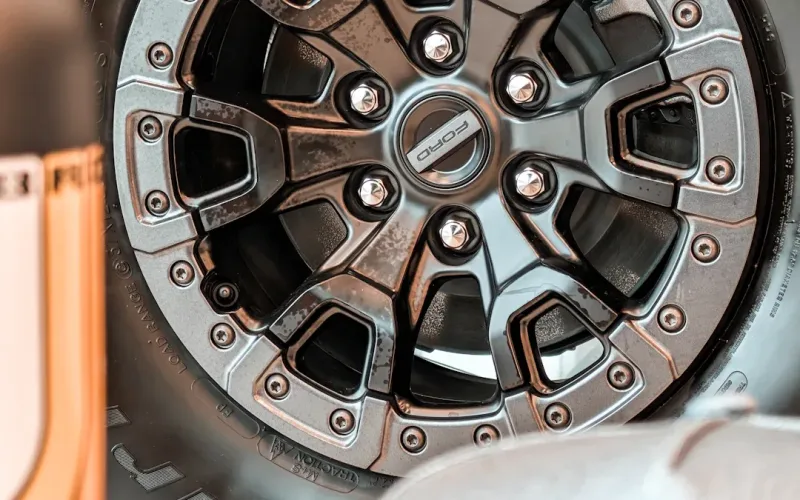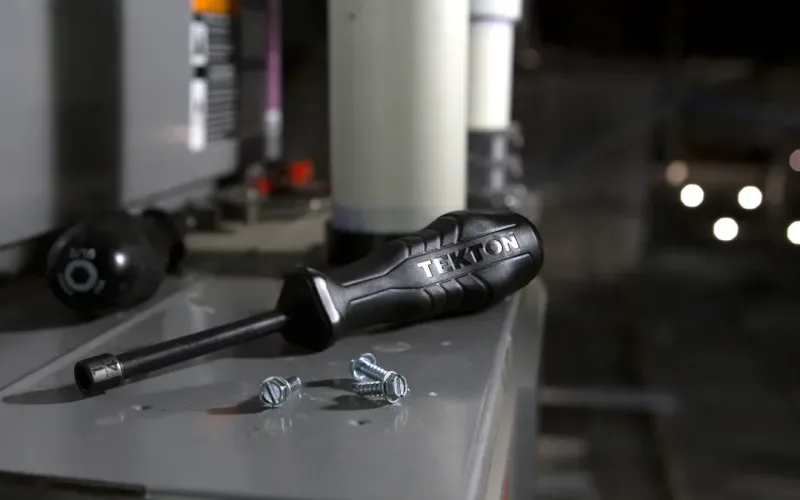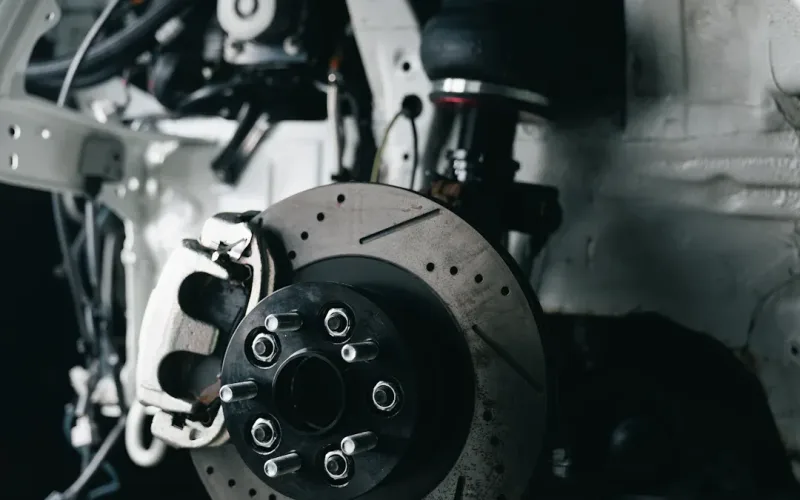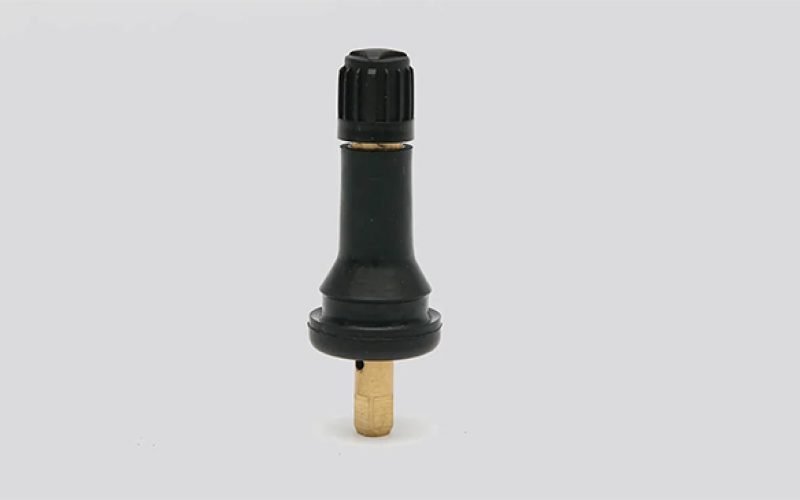

admin1
August 26, 2025
Valve Stem and Sensor Differences You Need to Know
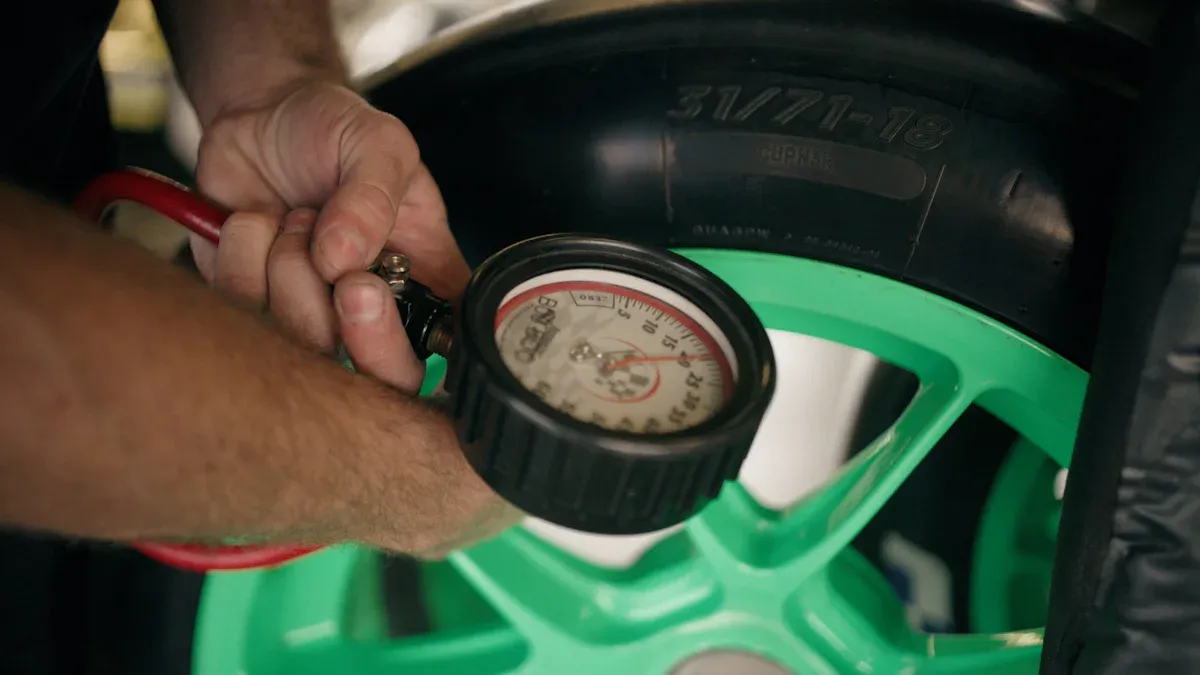
Valve stem and sensor both play important roles in tire safety. Valve stems control air flow into and out of the tire. Sensors measure tire pressure and alert drivers to unsafe levels. Each part serves a unique purpose. Tire maintenance depends on proper valve stem and sensor compatibility. Drivers should understand how these components work together to keep vehicles safe.
What Is a Tire Valve Stem?

Definition and Function
A tire valve stem is a small but essential part of every wheel. It acts as the main entry and exit point for air in the tire. The valve stem uses a one-way mechanism to let air in when inflating the tire and to keep air from escaping during normal use. Tire valve stems have three main parts: the stem body, the valve core, and the valve cap. The valve core is a spring-loaded pin that seals the air inside the tire. The valve cap protects the core from dirt, moisture, and damage. These valve stem components work together to maintain proper tire pressure. Regular inspection and maintenance help prevent air leaks and keep tires safe.
Tip: Always check the valve cap. It helps prevent leaks by keeping out dirt and water.
- The main functions of tire valve stems include:
- Allowing air to enter and leave the tire.
- Preventing air from escaping.
- Protecting the valve core from debris and moisture.
- Helping maintain tire safety and fuel efficiency.
Types of Tire Valve Stems
Tire valve stems come in several types, each designed for specific vehicles and pressure needs.
- Rubber snap-in valve stems are the most common for passenger vehicles. They handle pressures up to 65 PSI and fit rim holes of 0.453″ or 0.625″.
- High-pressure snap-in valve stems are used in medium and heavy-duty trucks and trailers. These can support pressures between 80 to 100 PSI.
- Metal clamp-in valve stems are found in high-performance or racing vehicles. They can handle pressures up to 200 PSI.
- The choice of valve stem depends on the vehicle type, tire pressure requirements, and wheel design. Some tpms valve stem types are designed to work with tire pressure monitoring systems.
Materials Used in Tire Valve Stems
Manufacturers use different materials for tire valve stems to ensure durability and performance. Most rubber valve stems use ozone-resistant EPDM rubber. This material resists heat, cold, and environmental damage, which helps extend the valve stem’s lifespan. Metal valve stems often use brass, which offers strength and corrosion resistance. Valve cores are usually made from nickel-plated brass for extra durability. The table below compares the main materials:
| Material Type | Common Material | Advantages | Disadvantages |
|---|---|---|---|
| Metal Valve Stems | Brass | Durable, less likely to rust, easy handling | Harder to install, may corrode |
| Rubber Valve Stems | EPDM Synthetic Rubber | Easy to install, resists corrosion | Less durable, wears over time |
Choosing the right material helps ensure the valve stem lasts as long as possible and keeps the tire sealed.
What Is a Valve Stem and Sensor?
What Does a Tire Sensor Do?
A tire sensor works as part of the tire pressure monitoring system in modern vehicles. This sensor measures the air pressure inside each tire and sometimes checks the temperature. It sends this information wirelessly to the vehicle’s TPMS control module. When the air pressure drops below the recommended level, the system triggers a warning light on the dashboard. Drivers see this alert and know they need to check or adjust their tire pressure. The tire pressure monitoring system helps prevent accidents, improves fuel efficiency, and extends tire life. By providing real-time tire pressure data, the sensor keeps the vehicle safe and running smoothly.
Note: A tire pressure sensor helps drivers avoid unsafe driving conditions by giving timely warnings about low tire pressure.
Types of Tire Pressure Sensors (TPMS)
The tire pressure monitoring system uses two main types of sensors: direct and indirect. Direct tire pressure monitoring uses sensors inside each tire to measure air pressure and send real-time alerts to the driver. These sensors have batteries and need replacement after several years. Indirect TPMS estimates tire pressure by checking wheel speed data from the vehicle’s ABS system. This type does not use physical sensors inside the tire but relies on changes in wheel rotation to detect low pressure.
- Direct TPMS:
- Sensors inside each tire measure air pressure.
- Sends real-time data to the vehicle’s computer.
- Requires battery-powered sensors.
- Indirect TPMS:
- Uses ABS sensors to estimate tire pressure.
- Monitors wheel rotation speeds.
- Needs recalibration after tire changes.
Both types of TPMS help maintain proper tire pressure, reduce accident risks, and improve fuel efficiency. Some aftermarket TPMS options offer remote monitoring and work with different vehicles.
Sensor Locations and Mounting
Tire pressure sensors can be mounted in different places on the wheel. Internal sensors sit inside the tire, usually at the base of the valve stem or attached to the wheel barrel. This location allows the sensor to measure air pressure and temperature accurately. External sensors fit on the valve stem outside the tire. These sensors are easier to install and maintain. Internal sensors need tire removal for access or replacement, while external sensors can be serviced without removing the tire.
- Internal sensors:
- Mounted inside the tire.
- Measure both pressure and temperature.
- Protected from damage.
- External sensors:
- Fixed on the valve stem.
- Easier to install and maintain.
The mounting location affects how easy it is to service the sensor and how accurate the readings are. Proper mounting ensures the tire pressure monitoring system works reliably and keeps the vehicle safe.
Key Differences Between Valve Stem and Sensor
Function and Purpose
Valve stem and sensor each serve a unique role in the tire system. The valve stem acts as a mechanical gateway for air. It lets air enter or leave the tire and keeps the air sealed inside. The valve stem includes a body, a core, and a cap. These parts work together to hold air and allow for inflation or deflation.
The sensor, on the other hand, is an electronic device. It measures the air pressure inside the tire and sends this data to the vehicle’s monitoring system. The sensor helps drivers know when tire pressure drops to unsafe levels. In direct TPMS systems, the sensor often attaches to or sits inside the valve stem. This setup allows the sensor to collect accurate pressure data.
Tip: The valve stem and sensor must work together. The valve stem keeps air in, while the sensor checks if the air pressure is safe.
- Key differences in function:
- Valve stems control air flow and retention.
- Sensors monitor and report tire pressure.
- Valve stems are mechanical; sensors are electronic.
- Sensors need power and communication systems; valve stems do not.
Materials and Construction
Valve stems and sensors use different materials and designs to meet their specific needs. The table below shows the main types and their features:
| Valve Stem Type | Material | Characteristics and Use Case |
|---|---|---|
| Rubber Valve Stems | Rubber (with >15% EPDM) | Flexible, cost-effective, used in standard vehicles, but can degrade from UV and chemicals. |
| Metal Valve Stems | Aluminum or Brass | Durable, corrosion-resistant, used in high-performance or commercial vehicles, TPMS compatible. |
| TPMS Valve Stems | Special metal clamp-in or rubber snap-in | Designed to anchor sensors, metal types have threaded inserts, rubber types are easier to install. |
TPMS valve stems differ from standard ones. They use special clamp-in or snap-in designs to hold the sensor securely. Metal clamp-in stems have threaded inserts for sensor attachment and require nickel-plated cores to prevent corrosion. Rubber snap-in stems resist corrosion and are easy to install, but they wear out over time. Both types need specific service kits during maintenance to keep the sensor working and prevent leaks.
- Additional points:
- Aluminum clamp-in stems can corrode, causing leaks.
- Rubber snap-in stems resist corrosion but degrade with age.
- Standard valve stems focus on air retention, while TPMS stems integrate with sensors.
Location on the Wheel
The location of the valve stem and sensor affects how technicians service the tire. Valve stems mount through the wheel rim. Technicians inspect them during every tire service to check for cracks, dirt, or damage. They flex the stem to find hidden damage and replace it if needed.
Sensors usually mount on or inside the valve stem, attached to the wheel rim. Some sensors clamp onto the wheel, sometimes opposite the valve stem for balance. Proper sensor orientation is important. If installed upside down, the sensor may not work correctly, causing warning lights or errors.
- Steps for proper maintenance:
- Inspect valve stems for damage during every tire service.
- Replace valve stems and seals during tire installation to prevent leaks.
- Use correct torque when tightening sensor nuts and valve stems.
- Clean the mounting area to avoid leaks from debris.
- Never reuse sensor nuts; always use new ones.
- Make sure sensors are not installed upside down.
- Follow manufacturer instructions for torque and installation.
Environmental factors like temperature and humidity also affect both parts. High heat can shorten sensor battery life and cause false alerts. Cold weather slows sensor response and drains batteries faster. Rain, snow, and ice can damage seals and cause leaks. Both valve stem and sensor need regular checks to ensure safe operation.
Maintenance Needs
Valve stems and tire pressure sensors require regular attention to keep tires safe and reliable. Each part has unique maintenance needs. Proper care helps prevent air leaks, sensor errors, and costly repairs.
Valve Stem Maintenance
- Technicians inspect valve stems during every tire service. They look for cracks, splits, and signs of aging.
- Rubber valve stems can dry out and crack over time. Heat, sunlight, and road chemicals speed up this process.
- Metal valve stems resist weather and chemicals better, but corrosion can still occur, especially around the mounting area.
- Valve caps protect the core from dirt and moisture. Missing caps increase the risk of leaks and contamination.
- Replacement of valve stems is recommended whenever tires are changed or repaired. This practice reduces the chance of future leaks.
Tip: Always replace valve stems when installing new tires. This simple step helps maintain air pressure and extends tire life.
Sensor Maintenance
- Tire pressure sensors need battery power to work. Most direct TPMS sensors use built-in batteries that last five to ten years.
- Sensor batteries cannot be replaced. When the battery dies, the entire sensor must be replaced.
- Sensors may fail due to battery depletion, physical damage, or corrosion at the mounting point.
- Technicians check sensor function during tire service. They use diagnostic tools to read sensor signals and confirm accuracy.
- Sensor seals and mounting hardware must be inspected and replaced as needed. Damaged seals can cause air leaks and sensor errors.
Common Maintenance Tasks
| Maintenance Task | Valve Stem | Tire Pressure Sensor |
|---|---|---|
| Visual Inspection | Check for cracks, splits | Check for damage, corrosion |
| Replacement Frequency | With every tire change | Every 5-10 years or when faulty |
| Cleaning | Remove dirt, debris | Clean mounting area |
| Hardware Check | Inspect cap and core | Inspect seals and nuts |
| Leak Prevention | Replace if damaged | Replace seals if leaking |
Best Practices for Maintenance
- Technicians should use only compatible service kits for TPMS valve stems and sensors. These kits include seals, nuts, and washers designed for specific sensor models.
- Proper torque is important when installing valve stems and sensors. Over-tightening can damage threads and seals.
- Regular tire pressure checks help spot leaks early. Drivers should check tire pressure monthly and before long trips.
- If the TPMS warning light appears, technicians should inspect both the sensor and valve stem for problems.
Note: Consistent maintenance of valve stems and sensors keeps tires safe and helps avoid unexpected breakdowns.
Routine care of valve stems and sensors supports vehicle safety, improves fuel efficiency, and extends tire life. Drivers and technicians who follow these maintenance steps help prevent common tire problems and keep vehicles running smoothly.
Valve Stem and Sensor Compatibility
Which Tire Valve Stems Work with Which Sensors
Choosing the right valve stem for a tire pressure monitoring system is important for safety and performance. Not all valve stems fit every TPMS sensor. Each type of valve stem matches certain sensors and vehicles. The table below shows which valve stems work with specific TPMS sensors and gives examples of compatible vehicles.
| Valve Stem Type | Compatible TPMS Sensor(s) | Example Compatible Vehicles / Notes |
|---|---|---|
| Rubber Snap-In Valve Stem | VDO TG1D, VDO TG1B, Conti-VDO | Alfa Romeo Giulia, Jeep Compass, Mitsubishi Outlander, Nissan Leaf, Renault Megane, Maserati Ghibli, and many others |
| Snap-In Valve Stem | Schrader, EZ-Sensor 2.0 | General compatibility with Schrader and EZ-Sensor 2.0 sensors; easy installation with specified torque |
| Snap-In Valve Stem | TRW Version 4 | Jeep Cherokee, Ram 1500 |
| Metal (Aluminum) Valve Stem | CONTI-VDO Sensors | OEM compliant, universal fit for CONTI-VDO sensors |
| Hybrid Snap-In Valve Stem | G.M./Ford EU-Pro Hybrid 3.5 & Schrader Gen 4 | Designed for broad compatibility with hybrid dual valves |
| Aluminum Schrader Valve | Schrader sensors, .625″ rim holes | Durable, easy to install, ensures accurate tire pressure |
This table shows that valve stem and sensor combinations depend on both the sensor model and the vehicle. For example, a rubber snap-in valve stem fits VDO TG1D sensors on many cars, while a metal valve stem works best with CONTI-VDO sensors. Some hybrid snap-in stems fit both GM and Ford vehicles, making them a good choice for broad vehicle compatibility. Always check the sensor and valve stem type before installation to ensure the tire pressure monitoring system works correctly.
Common Compatibility Issues
Drivers and technicians often face problems when mixing valve stems and TPMS sensors. The most frequent issue comes from using rubber valve stems with TPMS sensors. Rubber stems can wear out faster because the sensor adds extra weight and stress. This can cause the stem to crack or leak air, leading to sensor failure or false warnings.
Other common issues include:
- Rubber valve stems may fail early when paired with heavy TPMS sensors, causing air leaks.
- Metal valve stems, such as brass or stainless steel, are usually recommended for better durability and to avoid these failures.
- Some vehicles, like certain Jeep models, only support rubber stems. They do not offer metal replacements, which can make finding the right part difficult.
- The design and weight of the TPMS sensor, along with the rim design, can affect how well the valve stem holds up.
- Replacing rubber stems with metal ones can cost more and may need a professional to install them.
- Regular inspection helps catch early signs of valve stem failure, such as cracks or corrosion.
- Some TPMS systems come with metal stems from the factory to prevent these problems.
Tip: Always inspect valve stems for damage during tire service. Early detection of cracks or leaks can prevent bigger problems with the tire pressure monitoring system.
What to Check Before Replacing
Before replacing a valve stem or TPMS sensor, technicians should follow a careful checklist. This helps ensure the new parts fit well and work safely with the tire pressure monitoring system.
- Clean the valve stem area to remove dirt, grime, and corrosion before installing a new sensor.
- Inspect the valve stem for cracks, bent cores, or worn threads. Replace the stem if any damage appears.
- Avoid over-tightening the TPMS sensor. Too much force can damage threads, seals, or the sensor itself.
- Make sure the valve stem is in good condition to keep a tight seal and prevent air leaks. Leaks can cause the TPMS to give false readings.
- Check that the valve stem matches the vehicle’s TPMS requirements. This ensures accurate tire pressure readings.
- Match the valve stem size to the rim hole size. Common sizes include .453″ for most cars and .625″ for trucks.
- Confirm the valve stem’s pressure rating fits the tire’s needs. Using the wrong rating can lead to leaks or failure.
- Use proper installation techniques to avoid damaging the sensor or valve stem.
- Do not replace the TPMS sensor unless it is damaged or the battery is dead.
- After replacing parts, reset or relearn the TPMS system so it can monitor tire pressure correctly.
- Regularly inspect valve stems for cracks or corrosion to keep the sensor working and prevent leaks.
Note: Federal Motor Vehicle Safety Standard (FMVSS) No. 138 sets rules for TPMS design and function. It requires malfunction indicators to alert drivers if the system fails, including problems caused by valve stem and sensor compatibility. Vehicle manuals also explain possible issues with replacement parts and how to spot warning lights.
Checking these points helps maintain the safety and reliability of the tire pressure monitoring system. Careful attention to valve stem and sensor compatibility protects against air leaks, sensor errors, and costly repairs.
How to Identify Your Tire Valve Stem and Sensor
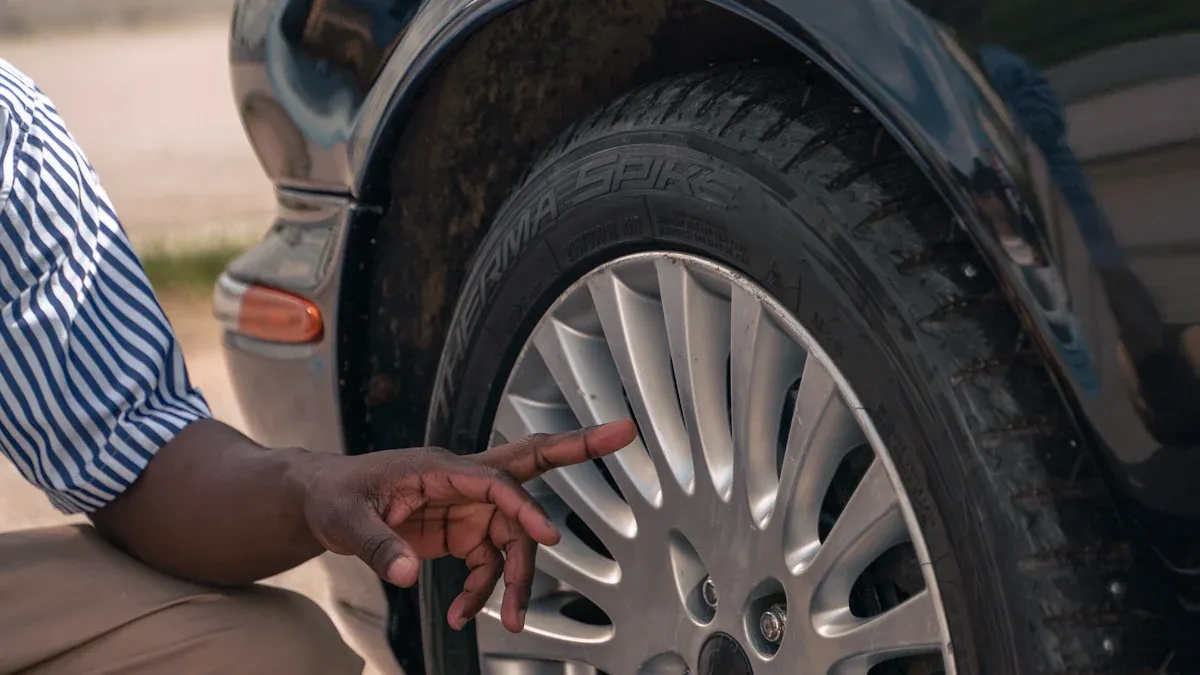
Visual Differences
Recognizing the difference between a tire valve stem and a tire pressure sensor helps drivers and technicians maintain tire safety. A standard valve stem usually appears as a simple rubber or metal tube sticking out from the wheel. It has no electronic parts and feels lightweight. Most passenger vehicles use rubber valve stems, which are flexible and black. Metal valve stems look shiny and feel heavier.
A tire pressure sensor often attaches to or replaces the valve stem. Direct TPMS sensors can be identified by their more substantial metal stems. These stems look larger and more complex than regular valve stems. Some sensors screw onto the valve stem and come in different types:
- Cap sensors: Small, compact caps that screw onto valve stems. They fit both metal and rubber stems. These sensors are weatherproof and often have anti-theft features.
- Flow-thru sensors: Longer, about two inches, designed for metal valve stems. They allow air inflation without removal and have replaceable batteries.
- Hybrid or marine sensors: Laser-sealed caps that can be submerged in water. They have extended-life batteries but lack anti-theft features.
A quick look at the wheel can reveal if a sensor is present. If the valve stem appears larger, metallic, or has a cap with extra features, it likely includes a sensor.
Checking for Compatibility
Proper compatibility between a valve stem and a sensor ensures accurate tire pressure readings and system reliability. Technicians check compatibility by confirming the correct sensor type and part number for the vehicle. Each sensor operates on a specific frequency, which can be identified using a diagnostic tool. The valve stem acts as an antenna for the sensor, so using the original equipment manufacturer (OEM) valve stem and cap is important. Aftermarket metal caps can interfere with sensor signals and cause errors.
During inspection, technicians replace or confirm the use of correct parts, such as a new rubber grommet, aluminum retaining nut, and special nickel-plated valve core. All parts must be torqued to the specified value to prevent leaks. Reusing old grommets or valve cores can cause corrosion or air leaks, especially if mixing brass and aluminum parts. Sometimes, technicians need to dismount the tire to check the sensor type or use a scan tool to verify frequency and compatibility. Using the right rebuild kit for the sensor and wheel type helps maintain a proper seal and system function.
Tip: Always use the correct valve stem, cap, and sensor parts for your vehicle to avoid sensor errors and air leaks.
Replacement and Maintenance Tips for Valve Stem and Sensor
Replacing Tire Valve Stems and Sensors Together
Replacing both the valve stem and sensor at the same time ensures the tire system stays reliable and safe. Technicians follow a careful process to avoid damage and ensure proper installation. Here is a step-by-step guide:
- Wear safety glasses and gloves for protection.
- Loosen the lug nuts while the vehicle remains on the ground.
- Lift the vehicle with a jack and secure it using jack stands.
- Remove the wheel by taking off the lug nuts.
- Deflate the tire by removing the valve core.
- Use a tire changer to demount the tire, exposing the sensor and valve stem.
- Remove the old sensor by unscrewing or unclipping it, then pull out the valve stem with a removal tool.
- Install the new sensor and valve stem in the same orientation, tightening to the manufacturer’s torque specifications.
- Clean the rim and apply tire bead seal if needed.
- Remount the tire onto the wheel.
- Inflate the tire to the recommended pressure.
- Reinstall the wheel, hand-tighten the lug nuts, then tighten them in a star pattern.
- Lower the vehicle and torque the lug nuts to the correct specification.
- Reset or relearn the TPMS system using a reset tool as described in the vehicle manual.
Tip: When working with aluminum clamp-in stems, remove the nut and let the sensor drop inside the tire to prevent damage.
Servicing Tire Valve Stems and Sensors Separately
Sometimes, only the valve stem or the sensor needs service. Technicians use special tools and follow best practices to avoid leaks or sensor errors.
- Use torque tools calibrated in inch-pounds for precise tightening.
- Always install new seals and valve stem nuts for clamp-on sensors. Old seals can cause leaks.
- Clean the mounting area thoroughly. Avoid lubricants or sealants that can affect torque values.
- Replace valve cores if removed to prevent corrosion.
- Position the sensor with the potted side toward the wheel. Incorrect orientation can cause relearn issues.
- Tighten the sensor nut to the manufacturer’s torque value, usually between 35 and 80 inch-pounds.
- For snap-in sensors, use only approved lubricants and preset torque screwdrivers.
Note: Align the sensor and stem carefully before final tightening to ensure proper function and minimize stress.
Best Practices for DIY Maintenance
Drivers can extend the life of valve stems and sensors with regular care. Simple habits help prevent leaks and sensor failures.
- Replace valve stems every time new tires are installed.
- Use proper valve caps to protect against dirt and corrosion.
- Choose corrosion-resistant valve components for longer life.
- Check TPMS sensors before seasonal tire changes.
- Use a TPMS diagnostic tool to monitor sensor battery health.
- Maintain correct tire pressure to reduce stress on both components.
- Inspect tires and valve components monthly for signs of wear or damage.
- Test valve stems for leaks using a water and dish soap mixture; bubbles show damage.
- Always check tire pressure when tires are cold for accurate readings.
🛠️ Regular inspection during routine tire maintenance helps catch problems early and keeps the tire system working safely.
Valve stems and sensors each play a vital role in tire safety. Incompatible or damaged parts can trigger warning lights, cause inaccurate pressure readings, and even lead to legal issues for service providers. Proper identification of valve stem and sensor types helps prevent corrosion, sensor failure, and sudden air loss. Before replacement, technicians should follow this checklist:
- Inspect for corrosion or wear.
- Confirm alignment and calibration.
- Test for leaks and smooth operation.
- Use correct parts and torque values.
🛡️ Careful checks and correct installation keep the tire system safe and reliable.
FAQ
What is the main difference between a valve stem and a tire sensor?
A valve stem controls air flow in and out of the tire. A tire sensor measures air pressure and sends data to the vehicle’s system. Both parts work together but serve different functions.
Can a damaged valve stem cause the tire pressure warning light to turn on?
Yes. A damaged valve stem can cause air leaks. The tire sensor detects low pressure and triggers the warning light. Regular inspection helps prevent this problem.
How often should drivers replace tire valve stems and sensors?
Drivers should replace valve stems every time they install new tires. Tire sensors usually last five to ten years. Replacement depends on battery life or if the sensor stops working.
Are all valve stems compatible with tire pressure sensors?
No. Not all valve stems fit every sensor. Each sensor type needs a specific valve stem design. Always check the vehicle manual or consult a professional before replacing parts.


